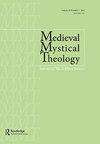Between Faith and Art: Representations of Heaven in the Italian Iconography of the Final Judgement
IF 0.3
0 RELIGION
引用次数: 0
Abstract
ABSTRACT The life after death fascinated people of all epochs, but the consciousness of medieval people was particularly prone to this idea. It is almost impossible to understand the medieval homo religiosus, its mentality and actions, without taking into account the basic context of eschatology. The subject of analysis in this article is the iconography of heaven in the Italian representations of the Final Judgement at the turn of the Gothic and the Renaissance periods. Various representations of heaven are shown, such as Abraham’s bosom, garden of Eden, the heavenly city of Jerusalem and hierarchical community of the saved. The analysis of the works of art is confronted with theology. It permits the identification of sources and determining the theological meaning of individual iconographic themes. Such an analysis from the perspective of art history and theology reveals unique relationship between word and image, religion and culture, faith and art.在信仰与艺术之间:意大利最后审判图像中天堂的表现
死亡后的生活使各个时代的人着迷,但中世纪人的意识尤其倾向于这种观念。如果不考虑末世论的基本背景,几乎不可能理解中世纪的同宗教者及其心态和行为。本文分析的主题是哥特式和文艺复兴时期之交意大利对《最终审判》的描绘中的天堂意象。展示了天堂的各种表现,如亚伯拉罕的怀抱、伊甸园、耶路撒冷的天城和被拯救者的等级共同体。对艺术作品的分析面临着神学问题。它允许识别来源并确定个人图像主题的神学意义。从艺术史和神学的角度进行分析,揭示了文字与图像、宗教与文化、信仰与艺术之间独特的关系。
本文章由计算机程序翻译,如有差异,请以英文原文为准。
求助全文
约1分钟内获得全文
求助全文

 求助内容:
求助内容: 应助结果提醒方式:
应助结果提醒方式:


